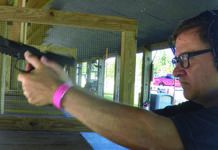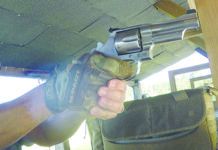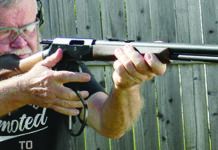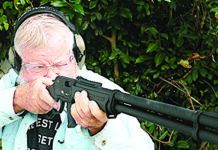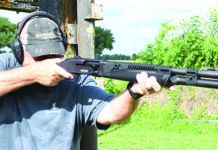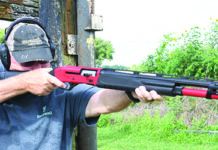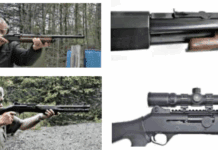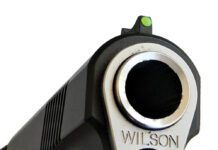When it comes to 1911-type handguns, most of us think of personal defense or tactical versions of the old warhorse; however, many are used for recreational shooting and informal target shooting. Recognizing that fact, our paper-punchers wanted to burrow down into the details of target-grade 1911 pistols to see what target sights, very tight slide-to-frame fit (some Army gunsmiths weld the barrel, slide, and barrel bushing to create a new standard of tightness, an option not available to most civilian shooters), and better trigger and barrel can produce in terms of accuracy. The goal was to choose which handgun was the most accurate and best suited for informal shooting and as a base gun for upgrades to more demanding competitions.
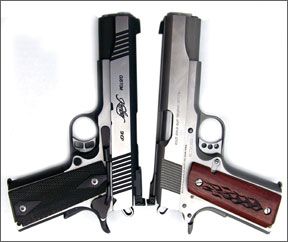
What we learned generally is that the primary advantage of such handguns are their adjustable sights. Adjustable target-grade sights allow the shooter to adjust his sights for a wide range of bullet weights. (The 45 ACP may be useful with bullet weights of 152 to 260 grains, but the 180- to 200-grain bullets are generally the most useful for target shooting.) Also, target-grade pistols offer a fine sight picture necessary for firing good groups at longer ranges.
We tested three target-sight-equipped pistols from Colt, Kimber, and Springfield. One was the Colt Gold Cup Trophy 05070X 45 ACP, $1050 MSRP, but which we found at a counter-retail price of $963. Kimber’s Eclipse Target II was the next gun, priced at $1345 MSRP and counter price of $1160. The third gun of the trio was the Springfield Loaded Model Target P19132LP, MSRP $1069 and retail price $973.
We were lucky to be able to obtain two loads especially designed for accuracy, the Federal 185-grain full-metal-jacket semi-wadcutter and the Cor-Bon 230-grain Performance Match. We also used a handload worked up just for this project, using the Oregon Trail 180-grain SWC. With these rounds we used an established method to zero a pistol with adjustable sights. If the pistol is close to the zero you want from the factory, minimal effort is required to zero the sight. If not, more work is needed. First, however, the shooter must determine click values, which will vary from sight to sight. To measure click value for each gun, we took a good benchrest position and fired a three-shot group. Next, we clicked the rear sight wedge notch five clocks to the right, then fired another group. We then measured the amount of adjustment, allowing us to precisely calculate the exact number of clicks needed to zero the piece, or the exact movement made by a single click. It doesn’t matter whether you do the vertical or horizontal clicks first, but both directions need to be measured.
Also, before we get into the guts of these guns, it’s worth noting at this point that some target pistols get battered to death by firing full-power ammunition—an easily avoided problem. The oft-repeated advice of fitting a full-power Government Model recoil spring to the Gold Cup is a non-sequitur. The recoil spring is full power. It is the hammer spring that is clipped and lightened to provide less resistance so that the slide will cycle with lighter loads. The Gold Cup is also supplied with a second lightweight recoil spring. Hardball or 230-grain FMJ loads usually break 830 fps. It is possible to work up a load using a 185-grain bullet at 750 fps with a proper lightweight recoil spring. Naturally, a handgun sprung in this manner would quickly batter itself into a rattling wreck with hardball loads.
With ammo of appropriate power, here’s how the guns did at the range:
Colt Gold Cup Trophy 05070X 45 ACP, $1050
The commercial target-gun segment began with Colt, which had the advantage of simply altering manufacturing processes to produce a tightened 1911. The original National Match codified many of the Army improvements and was basically a tightened, target-sight-equipped 1911. Over the years, some of the pistols featured a lightened slide (to operate with light target loads) and target sights that resulted in the pistols being ill suited for anything other than target use.
We ordered a new Gold Cup through our favorite outlet, and the one we received is different than the one in Colt’s catalog. It isn’t unusual for certain types of handguns to be in the system, changing warehouses and distributors for years, but this is the last Colt Gold Cup with the rib in the slide, which we prefer, but with the Colt Elliason-style sight, which may not be ideal. Colt now offers the Gold Cup with the Bo-Mar rear sight, but the slide is a round top. With Bo-Mar out of business, the future of the target-sighted Colt hinges upon other sources. Still, this is a Colt, a Gold Cup, and it was unfired.
The Colt set the pace for the rest of the handguns tested. This pistol features target sights, a target trigger, and a lowered ejection port. This is the classic target pistol from Colt. It is not simply a Government Model with target sights. The barrel-to-slide and bushing fit were excellent. Notably, Colt uses a King’s match-grade barrel bushing with this handgun. Our experienced shooters checked the fit of the barrel and found that Colt is still strong when fitting the barrel in the proper three-point pedestal manner. The upper barrel lugs rival a custom fit, and the lower lugs and link showed no sign of battering or eccentric wear after the test program.
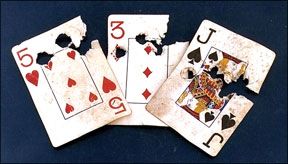
We did have a sizable gripe. The pistol is supplied with wraparound rubber grips. At first, we thought they were Pachmayr grips, which would be all to the good. In our experience, Pachmayr grips offer good fit and feel and good adhesion when firing for accuracy. The grips supplied with the Colt were an imitation that did not feel good, we thought. They were harder than a Pachmayr, lacked the steel insert, and did not have the same fit. Colt went cheap on this one, our testers said. The grips covered the front of the trigger guard, stretching the hand for average-size fingers. Later during the firing, we fitted a set of grips from Deathgrips.net. These are plain slab-sided grips with a simple flame motif that gave some purchase, but they were overall superior in feel to the Colt grips. Also, the Colt grips covered the front strap, which some of us did not appreciate.
Additionally, one of our raters sounded a potential sour note. Over the years, he has noticed that the Colt adjustable sight, attached by a roll pin, is prone to flying off after heavy use. It is a common problem not always solved by fitting a solid pin. Our roll pin did not work loose, but it happens. A Colt with a Bo-Mar type sight dovetailed into the slide will solve this, if they are able to get a substitute. But that would likely affect the rib on the Gold Cup, which we really like.
On the other hand, the Colt came out of the box running, with no failures to feed, chamber, fire, or eject. Trigger compression was smooth at a crisp 3.75 pounds. We were able to obtain good results on the firing range, with the Colt proving to be the second-most accurate handgun tested. It produced a fine average and the single best group fired, a 1.1-inch cluster at 25 yards with the Federal Match load.
Our Team Said: The Colt is the traditional target 1911 and still makes a fine target pistol. It was the second-most accurate handgun and offered good fit and finish. If you want a pure target pistol, this is the one. But for hard use with full-power loads, one of the other pistols might be a better choice.
Springfield Loaded Model Target P19132LP 45 ACP, $1069
This was a handsome pistol. All agreed the stainless pistol was finished better than the Colt. This Loaded Model with the standard ambidextrous safety and Novak front post also featured Springfield’s adjustable rear sight firmly dovetailed in place in the modern fashion. Elsewhere, there was a well-designed beavertail safety and a smooth trigger of 4.75 pounds, the heaviest tested. The front strap was not checkered, but the Brazilian walnut grips were well figured and quite attractive with good adhesion.
The Springfield was the tightest pistol tested, as judged by racking the slide a few times before the firing test. (All the handguns were lubricated before the firing tests.) We began firing with the Cor-Bon 230-grain load, as it has the most recoil factor, but the Springfield suffered several break-in malfunctions. The pistol is tight, tighter than most Loaded models we have handled. We do not know if Springfield simply fits a target sight to Loaded Models or intends to fit target pistols tighter or if we were lucky. This tightness led to seven failures to fully close the slide during the first 25 rounds of ammunition. Afterward, there were no failures to feed, chamber, fire, or eject. A defense load—860 fps, 230 grains—probably would have cycled from the get go.
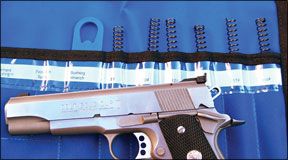
The Springfield is a solid target-grade pistol that gives good results. Like all of the pistols tested, if used for pure target work we would perform a trigger job and lower trigger compression to perhaps 3.5 pounds. Just the same, the pistol was manageable off of the bench as issued. Springfield fans noted that the inherent accuracy seemed closer to TRP level than Loaded Model level. We recently tested a Loaded Model that grouped three different loads into averages ranging from 2.0 to 2.9 inches, acceptable to good for service work. This Springfield earned an average of 2.0 inches with the Oregon Trail load. The single best group came with the Federal Match load at 1.65 inches, but the average grew to 2.0 inches with this load and 2.15 inches with the Cor-Bon offering. All of this is excellent performance, but just the same the Springfield was not the most accurate handgun tested.
Our Team Said: The Springfield is a handsome handgun well worth its price. The break in malfunctions were once standard operating procedure for all new 1911 pistols, and while seldom seen in modern handguns, is acceptable if the pistol smooths out during the first 50 rounds.
Kimber Eclipse II Target 45 ACP, $1345
This was the most expensive handgun tested. However, there are features found on this handgun not found on the other pistols. The wonderfully rugged, well-designed adjustable sights of the Kimber feature tritium inserts. We are not aware of a single other adjustable sight with tritium inserts. This feature overstates the obvious. The Eclipse is a pistol intended for all-round personal defense use. A generation ago, a 1911 with target sights would not be seen in a uniform holster, but times have changed. Modern adjustable sights are rugged enough for duty.
The Eclipse is as an attractive and distinctive a pistol today as when first introduced. The combination of polished stainless flats and dark top surfaces is striking. The Eclipse target version features Kimber’s adjustable sights. These sights are like Bo-Mars in the most competent manner. The Kimber sight uses a dovetail attachment far superior to the dated Colt-type attachment, in the view of our team. The Kimber exhibited excellent fit and finish. Trigger compression was the best of the group at a smooth, clean, and creepless 3.5 pounds.
The pistol came out of the box running with no failures to feed, chamber, fire, or eject. The Eclipse was the only pistol tested with front-grip-strap checkering. This proved to be an advantage in keeping good adhesion when firing long strings. The pistol was more accurate than the Colt. The single best string was a 1.25-inch group fired with the Cor-Bon Performance Match offering. The Eclipse was the most consistent pistol with all loads tested. Subjectively, the Kimber was the pistol that most of our raters would choose. Because the Eclipse features an ambidextrous safety, a left-handed shooter would have to choose either the Eclipse or the Springfield target model.
Our Team Said: Based on features and performance, the Eclipse is a solid pick and the best all-round choice. This pistol is a solid performer suited for use with a wide spectrum of loads. There is nothing fragile about the pistol—it is well fitted and ambidextrous, and the front-grip checkering and night sights set it apart from the crowd. All of the pistols gave good service, but in the end the raters agreed that the two top performers were the Eclipse and the Gold Cup. The Colt was the second most accurate pistol, and the primary reason was Colt’s superb barrel fit and understanding of the pedestal type lock up. We do feel that the Colt would be less suitable for all around hard use then the Eclipse, and the difference in accuracy is a hair’s breadth. Most raters favored the adjustable sights of the Kimber and the Springfield over the Colt. With accuracy as the primary criteria, the Colt carried the day over the Springfield. In the end the raters were nearly unanimous—buy the Kimber, even though it is the most expensive.
0211-TARGET-ACCURACY-CHRONO.pdf
0211-SPRINGFIELD-LOADED-MODEL.pdf





